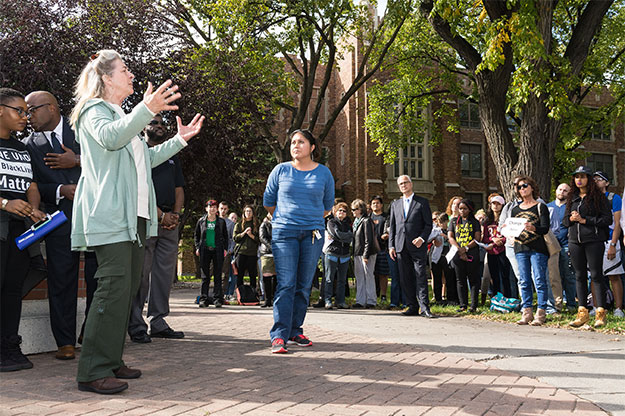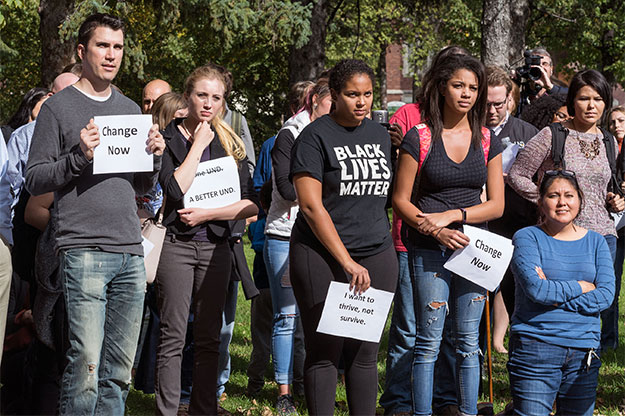Getting back on track
Kennedy aims to make UND a trailblazer again in diversity, inclusion
UND has been a trailblazer over the years when it comes to inclusiveness and diversity.
At his Inauguration Address on Monday, President Mark Kennedy recalled for the audience that six of the first eight UND graduates in 1889 were women – some Ivy League schools didn’t accept their first female student until the 1970s.

He also reminded the crowd that other UND alums have been at the forefront of promoting racial harmony: people such as Era Bell Thompson, who would later go on to serve as editor-in-chief of Ebony magazine and was an outspoken African-American critic of racial and gender injustices.
And Ronald Davies, as a federal judge, ordered desegregation at previously all-white Little Rock High School, setting the stage for landmark civil rights changes to come.
Despite this legacy, racially charged incidents among some UND students in recent days suggest that society and the University still have some work to do.
“Our place should be at the cutting edge of making all feel welcome,” Kennedy said.

Kennedy recently called for the formation of a Diversity Advisory Council to catalogue all of the positive aspects of diversity and inclusion that already exist in the UND community as well as areas where the University is falling short.
He also wants to hear other ideas that the University might try.
“Knowing all of these things will be central to getting us back on the right track,” Kennedy said.
Kennedy asked Sandra Mitchell, associate vice president for diversity and inclusion, for a list of 12 individuals she felt would meet these expectations for the council.
Mitchell has sought to ensure faculty, staff, students and people from the community have representation.
Mitchell sent a list of names to Kennedy on Oct. 3, and letters of invitation have been sent out. The final decision of who has a seat still needs to be made.
“We want to look at curriculum, we want to look at co-curricular activities, and we want to look at policies,” Mitchell said. “All of these things have the potential to bring people together, and they should bring people together. That’s what this work is about.”


